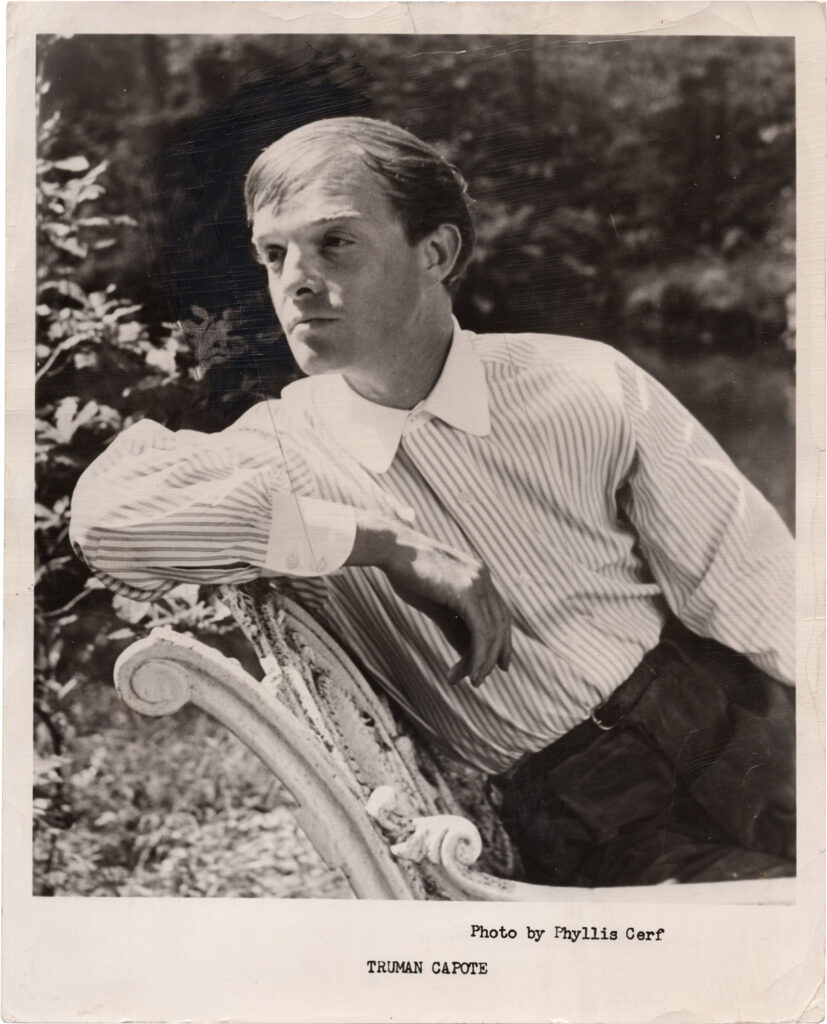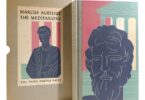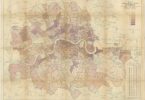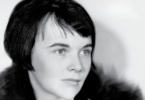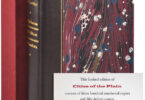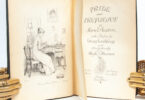Since he was very young, Truman Capote knew he was a “very special person.” That’s why, he once told The New York Times, he “had to have a very special life.” And he did have an unusual life, indeed. A sharp social observer and one of the most famous postwar American writers, he was –and still is– a captivating personality and author.
Born as Truman Streckfus Persons in 1924, he spent most of his childhood in rural Alabama. After getting divorced, his mother, Lillie Mae Faulk, left Truman in the care of her sister in Monroeville, to whom she gave Truman’s birth certificate for safekeeping. Thanks to the Book Collection Library, the original piece is for sale on BIBLIO.
Outside of the cousins Truman lived with as a child, his aunt Lucille Faulk Ingram and her daughter, Cecilia, were his closest kin. In the comfort of their home, Truman began to write his first novel, Other Voices, Other Rooms, published by Random House in 1948. During that time, he also developed an affection for an elderly cousin named Sook, about whom he wrote in A Christmas Memory and The Thanksgiving Visitor.
In 1935, Truman changed his surname to that of his mother’s second husband, Joe Capote. He and Truman’s mother shared a taste for fine things, so the newlyweds moved to New York to experience an extravagant lifestyle. Capote often described his relationship with his mother as turbulent, even though her absence marked his childhood.
The success of Breakfast at Tiffany’s and In Cold Blood –alongside his obsession with climbing to the top of the social ladder and his undeniable charm– make him a New York socialite and a member of the jet set. But his personality was also contradictory. He could be seductive as well as ruthless for some. As the fine stylist he was, he may have the most gimmicky yet precise definition of himself: “But I’m not a saint yet. I’m an alcoholic. I’m a drug addict. I’m homosexual. I’m a genius.”
Near the end of his life, Capote moved from New York to Los Angeles, where he died in 1984. The author’s ashes and the clothes he wore when he died were sold at auction in 2016 for $43,750.
Other Voices, Other Rooms (1948)
Published in 1948, when Capote was only 23 years old, Other Voices, Other Rooms is the story of a sensitive young boy’s adolescence in a bleak Southern rural town. A semi-autobiographical work, the book centers around themes of love and death, along with homosexuality and race.
This story’s success was immediate, and it stayed on the New York Times bestseller list for nine weeks, selling over 26,000 copies. Capote’s early works gave him a reputation in the literary circle, but his recognition rocketed after the novel’s release. Among that literary circle was writer Carson McCullers, who put him in contact with Random House Publishing.
Breakfast at Tiffany’s (1958)
Breakfast at Tiffany’s is Capote’s admitted favorite literary creation. Published by Random House in 1958, it was his first approach to New York socialites. The story follows the enigmatic Holly Golightly as she pursues happiness and identity in the city. Through relationships and encounters, she navigates love, loneliness, and societal expectations, ultimately seeking authenticity in a superficial world.
As with his first novel, this story has some autobiographical elements. Capote’s mother shared with Holly her dreams of society and her taste for elegance.
Capote’s novella was published with three other short stories: “House of Flowers,” “A Diamond Guitar,” and “A Christmas Memory.” Breakfast at Tiffany’s was adapted to film in 1961 by George Axelrod, starring Audrey Hepburn in her most memorable role as Holly Golightly. The film was released on 5 October 1961.
In 2020, the final typescript of Breakfast at Tiffany’s was set to be auctioned. The pages revealed Capote changed the original name of the main character from Connie Gustafson to Holly Golightly and lightened the most explicit lines of the manuscript.
In Cold Blood (1966)
In Cold Blood is not only Truman Capote’s masterpiece but also one of the most important books published during the second half of the 20th century. Capote was already a well-known novelist by its publication, but In Cold Blood made him an international star –besides adding a large amount of money to his bank account.
The book is important for various reasons, including creating a new literary genre, which Capote termed as a “nonfiction novel.” Every true crime novel written since then owes something to Capote’s account of the November 1959 crime of the local farmer, Herb Clutter, his wife, Bonnie, and two of his four children, Nancy and Kenyon. Over the decades, true crime has become one of American nonfiction’s most popular literary forms.
After reading an article about the brutal homicide of a family in their farmhouse in Holcomb, Kansas, Capote traveled to the small town. The brutal slaying of the Clutter family by two robbers is something the town of Holcomb had never seen. Neither they had seen anything like Capote, who was openly gay.
He arrived at Holcom amid the investigation. He depicts the trial, the execution of the killers, and the impact on the community in a more comprehensive –and literary– way than any other traditional crime reporting. But, above all, he was interested in the psychological aspect of the murderers, Dick and Perry, and what might have led them to commit such a crime.
After six years of conducting research and interviews, In Cold Blood was originally published as a four-part series in The New Yorker magazine in 1965 and in book form in 1966 by Random House. The book was adapted into a film of the same name in 1967. The 2005 film Capote, starring Philip Seymour Hoffman as the author, also narrates the book’s creative process.
Capote’s friend Harper Lee, whom he met in Monroeville when they were children, was his secretary while investigating the case. However, many have claimed Capote minimized her pivotal role in the project, which went far beyond what he admitted.
The result of all those years of work is a clear example of Capote’s literary talent and legendary attention to detail. In 1957, he confessed to the Paris Review he thought of himself as a stylist, someone who “can become notoriously obsessed with the placing of a comma, the weight of a semicolon.”
In Cold Blood was awarded with the Pulitzer Prize for non-fiction. Capote never finished another novel after this one.
Answered Prayers (1987)
Answered Prayers became Truman Capote’s most anticipated novel. For two decades, he claimed he was writing the “greatest novel of the age,” the story of a writer and his way through polite society. Never short of compliments when talking about himself, he defined this work as the equivalent of Proust’s In Search of Lost Time. Random House paid the exorbitant advance of one million dollars. And yet, he never finished it.
We can only read three long chapters of Answered Prayers, which eventually became the most famous unpublished novel in American Literature. The novel was published in 1987 in a posthumous edition. Before that, in 1975, the chapters appeared in Esquire magazine. The first one, “Mojave,” was favorably received, but “La Côte Basque, 1965” caused great controversy.
Although he changed the names, the story was partially based on the dysfunctional marriage of William S. Paley and Babe Paley. Babe was Capote’s close friend and a member of his circle of high-society, fabulous rich women he called his “swans.” As a result of revealing their intimacies to public scrutiny, the group ostracized Capote. He became a pariah, and he never recovered from that.
There are different readings of that feud. Capote’s charisma and talent take him from a small town in Alabama to the most exclusive circles. Was Answered Prayers a kind of vengeance for those who despised his mother decades ago? Did these circles receive Capote as more than mere entertainment, the writer of the moment, or just as an arrivist?
When the chapters appeared, Capote already had serious problems with alcohol. The fuss raised expectations and put the spotlight on his next moves. But he never could finish the book.
Since then, rumors about the manuscript being written and remaining hidden have been circulating. Capote contributed to the tittle-tattle, reciting novel passages in many social gatherings. In 2012, a six-page manuscript of what was supposed to be another chapter of the novel was published in Vanity Fair magazine. It was called “Yachts and Things,” and, like Answered Prayers, it is unfinished.
In January 2024, FX premiered Feud: Capote vs. The Swans, about the dispute following the “La Côte Basque, 1965” publication. The series has Gus Van Sant as director, Tom Hollander starring as Truman Capote, and Naomi Watts starring as Babe Paley. The show’s cast also includes Diane Lane, Chloë Sevigny, Calista Flockhart, Demi Moore, and Molly Ringwald.
Music for Chameleons (1980)
Music for Chameleons is a collection of short stories and essays that captured his writing and personal interests. The book’s first chapters reflect the author as a young writer, while the rest follows Capote into maturity. Some have stated that this book, published by Random House in 1980, is his most honest. He explains his fascination with crime and his access to celebrities and criminals. He reveals his inner self throughout its pages as a kind of testament.

